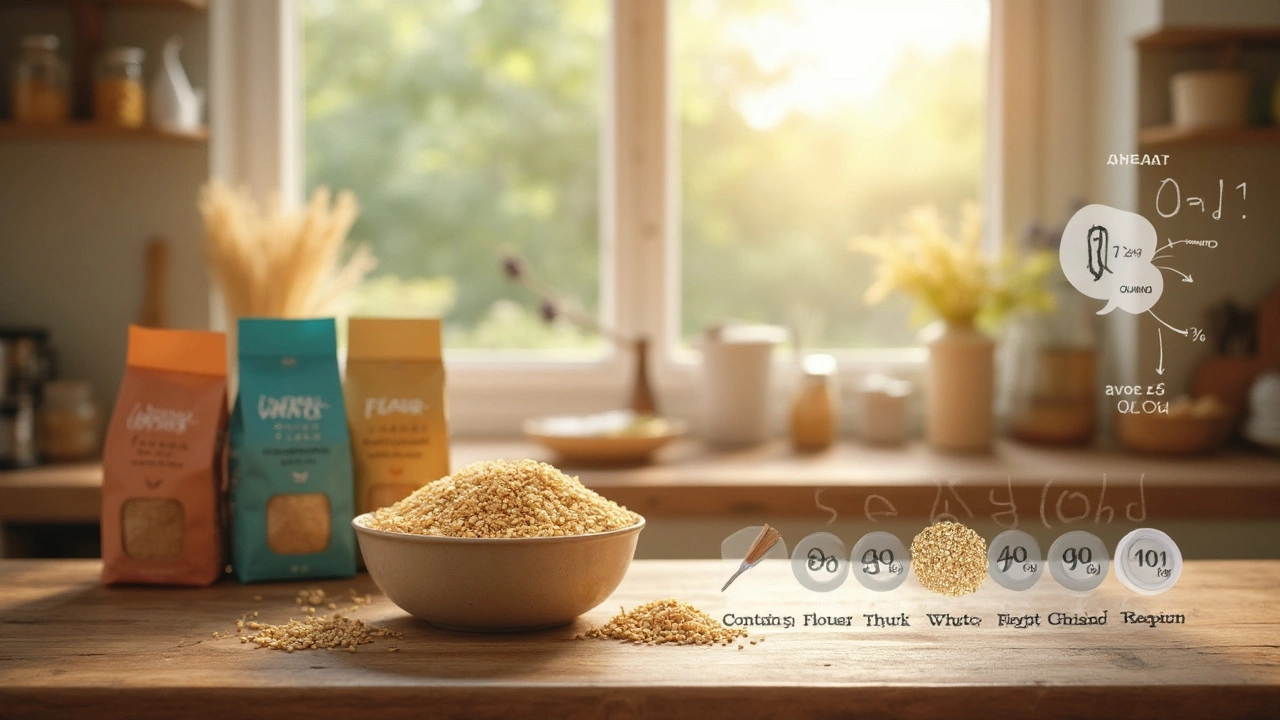
Ever reached for couscous thinking it’s just like rice and safe for gluten-free diets? Nope. Couscous isn’t a grain—it’s tiny pasta, made from crushed wheat semolina. That means gluten is baked right in. If you have celiac disease, are sensitive to gluten, or just trying to skip it, couscous is definitely off the list.
You’ll find couscous on dinner tables everywhere, from North Africa to Europe. But despite its similar look to grains like millet or quinoa, it’s a wheat product through and through. Pairing couscous with gluten-free cakes or using it as a base for a gluten-free recipe is a total no-go. Wheat, and all products made from it—including couscous—are loaded with gluten proteins that wreak havoc on sensitive guts.
- What Exactly Is Couscous?
- Is There Gluten in Couscous?
- Why Couscous Doesn’t Work for Gluten-Free Cakes
- Safe Alternatives for Gluten-Free Baking
- Smart Tips for Handling Gluten in Your Kitchen
What Exactly Is Couscous?
Couscous looks like a grain, but it’s actually really tiny pasta. It comes from North Africa and is made by mixing semolina—a coarse wheat flour—with water. The mix is rolled into tiny balls and then steamed. You’ll usually see regular couscous, Israeli (a.k.a. pearl) couscous, and Lebanese couscous. All of them are made with wheat and high in starch.
Let’s get specific. People often confuse couscous with things like quinoa or rice, but those are pure grains from plants that naturally have no gluten. Couscous, however, is made from wheat, which puts it in the same family as foods like pasta, bread, and most breakfast cereals.
- Couscous is rolled and steamed—never boiled like pasta.
- It cooks fast. Instant couscous takes about 5 minutes with just hot water.
- It’s a staple in Moroccan, Algerian, and Tunisian meals.
Here’s how couscous stacks up nutrition-wise, compared to plain white rice and quinoa (per 100g cooked):
| Food | Calories | Carbs (g) | Protein (g) | Gluten? |
|---|---|---|---|---|
| Couscous | 112 | 23.2 | 3.8 | Yes |
| White Rice | 130 | 28 | 2.7 | No |
| Quinoa | 120 | 21 | 4.1 | No |
So, bottom line: if you’re hunting for a gluten-free side or a safe swap in a recipe for gluten-free cakes, couscous doesn’t make the cut. It’s wheat, through and through. Keep that in mind before tossing it into your next dish.
Is There Gluten in Couscous?
The truth is that couscous is full of gluten. Couscous is made from semolina, which is a specific type of wheat. Wheat, along with barley and rye, is one of the top sources of gluten. No matter how small those golden granules look, they’re pretty much wheat through and through, so gluten is baked in.
Thinking couscous could be a sneaky exception? It’s not. Here’s a breakdown of common couscous types and their gluten content:
| Type of Couscous | Main Ingredient | Contains Gluten? |
|---|---|---|
| Moroccan Couscous | Wheat Semolina | Yes |
| Israeli (Pearl) Couscous | Wheat Flour | Yes |
| Whole Wheat Couscous | Whole Wheat | Yes |
The protein in gluten is what gives couscous its chewy texture and helps it hold its shape—something rice or corn simply can’t do in the same way. That’s why, even a spoonful has enough gluten to set off a reaction in anyone with celiac disease. To put it in perspective, anything made from wheat is out if you’re cutting gluten, and couscous is right up there with regular pasta and bread.
Labels don’t always shout "contains gluten," so always check the ingredients. There are gluten-free grain lookalikes like quinoa, cornmeal, or millet, but traditional couscous? Always gluten-packed. When it comes to gluten-free baking or meal planning, it’s best not to take risks—couscous is a no-go for anyone avoiding gluten.

Why Couscous Doesn’t Work for Gluten-Free Cakes
If you’re thinking about tossing couscous into a gluten-free cake, stop now. Couscous is made from wheat, and wheat equals gluten. For anyone trying to avoid gluten, adding couscous is the wrong move—it’s not just a little bit of gluten, it’s packed full. That means people with celiac disease or wheat allergies are going to get sick from even a small amount.
Also, couscous doesn’t behave anything like gluten-free flours or grains. It soaks up liquid differently, stays firm, and adds a chewy bite. If your goal is a light, fluffy gluten-free cake, couscous would make it heavy, gummy, or even gritty. Swapping out gluten-free flour for couscous will wreck your texture, flavor, and all that hard work in the kitchen.
Just to put things in perspective, here’s how wheat content stacks up in popular grains and flours:
| Ingredient | Gluten Content | Recommended for Gluten-Free Baking? |
|---|---|---|
| Couscous | High | No |
| All-Purpose Wheat Flour | High | No |
| Oat Flour (certified gluten-free) | None* | Yes |
| Almond Flour | None | Yes |
| Rice Flour | None | Yes |
*Oats only work if they’re certified gluten-free. Regular oats often get contaminated during processing.
You really want to stick with tried-and-true gluten-free options when it comes to cakes. If you need the structure that gluten gives, blends of rice flour, potato starch, and xanthan gum do a much better job—without causing tummy trouble or reactions.
Safe Alternatives for Gluten-Free Baking
If you’re craving the convenience of couscous but have to stick with gluten-free options, you’ve got plenty of swaps that won’t leave you feeling like you’re missing out. Supermarkets are stocked with choices that work in both savory and sweet bakes, like gluten-free cakes or hearty salads.
Quinoa tops the list for many, and for good reason. It cooks up fluffy, has a mild, nutty taste, and packs more protein than couscous. Plus, it’s naturally gluten-free and safe for anyone avoiding wheat. Millet and rice (especially short-grain or arborio) give you a similar look and texture to couscous, and they perform well in most recipes. For cakes and bakes, opt for blends with rice flour, almond flour, or certified gluten-free oat flour.
If you want a grain to mimic couscous in a salad or on the side, try these picks:
- Quinoa: Delicate texture, cooks in 15 minutes, and loaded with nutrients. Rinse well before cooking to avoid bitterness.
- Buckwheat: Despite its name, it’s not wheat. It has an earthy flavor and works great in both sweet and savory dishes.
- Cauliflower rice: Finely chop or pulse raw cauliflower in a food processor for a light, grain-free alternative—plus, you get more veggies in.
- Gluten-free pasta pearls: Some brands offer corn, rice, or lentil-based pasta shaped like couscous.
Mixing gluten-free flours for baking can feel overwhelming at first, but it gets easier once you know what works. Blends with xanthan gum or psyllium husk help give structure, so your cakes rise and don’t sink into a dense mess. Always check for hidden gluten—sometimes, even certified gluten-free mixes can be cross-contaminated during processing, so it’s smart to stick with trusted brands.
There’s no shame in using store-bought blends. In fact, America’s Test Kitchen says they’ve "found that commercial gluten-free blends deliver more consistent, lighter crumbed cakes than most homemade flour mixtures."
“Gluten-free flours aren’t all created equal, and a reliable, tested blend can make or break your recipe.” — America’s Test Kitchen, Gluten-Free Baking Guide, 2024
Don’t be afraid to test! Everyone’s taste is different, so swapping one blend for another might be the tiny tweak you need for the perfect slice of cake or bite of faux-couscous salad.

Smart Tips for Handling Gluten in Your Kitchen
Keeping gluten and gluten-free foods separate is harder than it sounds, but a few smart moves can make all the difference. Cross-contamination is sneaky—it can happen from a shared spatula, a crumb on the counter, or even a splash from the toaster. For anyone baking, especially if you’re aiming for gluten-free cakes, you need to know where gluten hides and how fast it spreads.
The easiest win? Set up clear work zones in your kitchen. Mark a counter, drawer, or shelf dedicated to gluten-free ingredients and tools. Get a second set of baking tools if you can—especially sifters, wooden spoons, mixing bowls, and even oven mitts. It’s way too easy for residual flour dust to cling to those.
- Wipe down surfaces and wash your hands every time before switching between gluten and gluten-free prep.
- If you use a toaster, go for a separate one just for gluten-free bread. Those sneaky crumbs add up fast.
- Sift gluten-free flours away from where you’ve handled regular flour, because airborne particles can hang around for hours.
- Store gluten-free products higher up in your pantry. That way, there’s no risk of wheat products sprinkling gluten down from above.
Double check ingredient labels every single time, even on stuff you’ve bought before. A lot of brands change suppliers or formulas without warning. Take couscous for example—even if the front says “whole wheat,” you’ll see pretty quickly in the ingredient list it’s never gluten-free. And do not trust bulk bins at the grocery store; the scoops always get swapped around.
When you’re cooking for a group, make the gluten-free dishes first—or better yet, cook them on a different day. That helps dodge stray traces from other recipes. Clean as you go and always use freshly-washed towels and dish cloths.
| Kitchen Zone | Risk Level | Extra Tip |
|---|---|---|
| Cutting boards | High | Use color-coded boards for gluten-free |
| Mixing bowls | Medium | Metal or glass cleans easiest |
| Toasters | Very High | Get a gluten-free only toaster |
| Sifters & sieves | High | Keep a separate set |
| Pantry shelves | Low to High | Store gluten-free on top |
Even just one slip can cause a reaction for people with celiac, so these tips aren’t just for show. The truth is, with the explosion in popularity of gluten-free products, more families have mixed kitchens than ever. So, even if you only bake gluten-free cakes once in awhile, these habits save tons of stress. Stay alert and you can whip up treats safely for everyone.


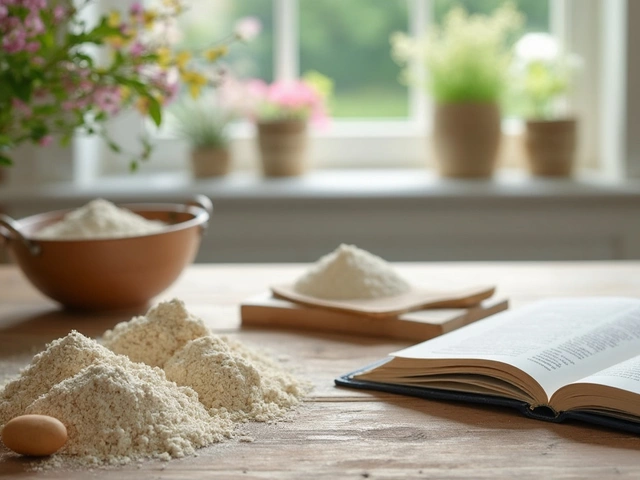


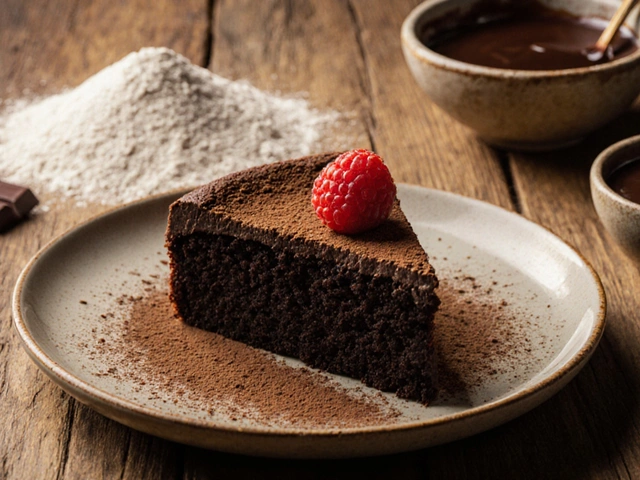

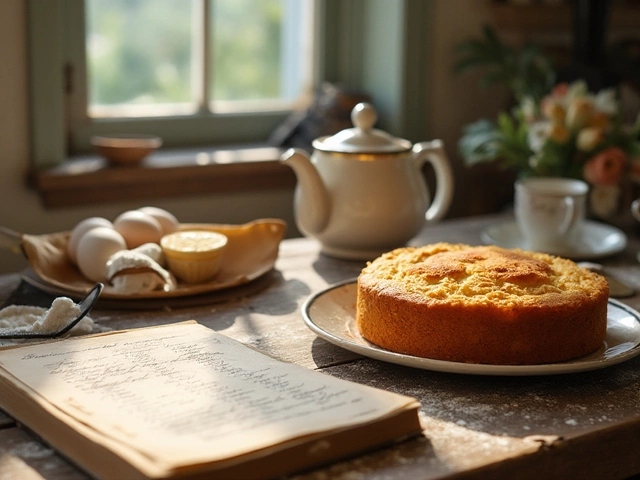

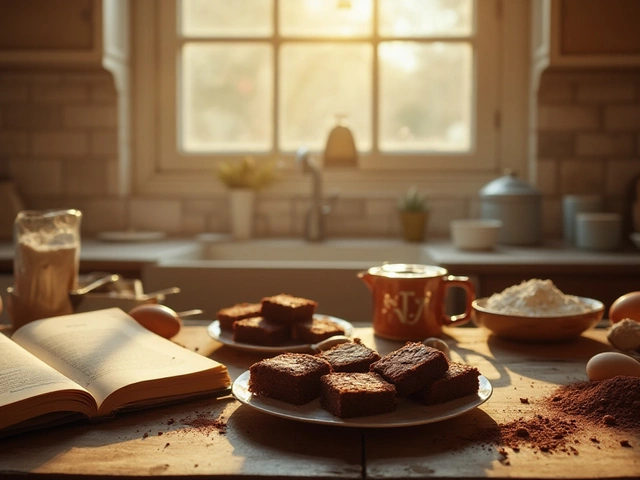

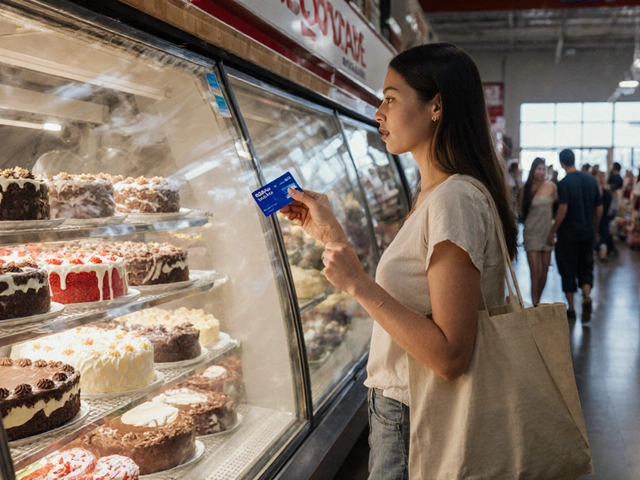
Write a comment